I have created the a chart in ggplot2 using the data shown here:
Categories A1 A2 A3 A4 A5
1 XX_1 41.151 61.017 67.639 94.6 137.643
2 XX_2 93.4175 127.4735 141.9 153.252 180.213
3 YY_1 160.5835 169.807 166.969 169.5705 184.47
4 YY_2 171.226 184.7065 194.1665 187.0715 218.526
5 ZZ_1 83.4845 97.438 122.98 127.4735 140.7175
6 ZZ_2 126.5275 139.535 140.954 157.982 183.524
8 LL_1 81.829 72.842 67.8755 56.76 48.246
9 LL_2 58.652 52.976 41.8605 32.164 31.9275
As you can see in the data that there are three sets of similar categories—XX, YY, ZZ, LL. These categories also have two sub-division-- _1 and _2. When I plot the data, all the categories are plotted equidistant from each other as shown in the chart here
However, I want the similar categories like LL_1 and LL_2 to be closer to each other, and the space between different pairs like XX , ZZ, YY, and YY to increase. I don't want all the categories to be equidistant from each other. I want to custom change the distance of similar and dissimilar categories. As shown in a rough Chart1 here:
I also don't want to use facet_wrap, and would like all the data to be shown in the same chart. I would really appreciate if someone could guide on how to solve this problem.
Below is the code i used to plot the chart:
##Loading the excel data
df <- read_excel("~\Sample.xlsx")
##Converting from wide to long format
df1 <- melt(df, id.vars = "Categories", measure.vars = c("A1", "A2", "A3", "A4", "A5"), variable.name = "AA", value.name = "values")
df1 <- df1[order(df1$Categories), ]
##Plotting the data
p6 <- ggplot(data = df1, mapping = aes(x=values, y=Categories))
p6 + geom_line(color="brown", size=0.1)+ geom_point(aes(color=AA), size=0.5)+
theme(axis.title.y = element_blank(), axis.text = element_text(face = "bold"),axis.text.y = element_text(size = 2.2),
axis.text.x = element_text(size = 2.2), axis.title.x = element_text(size = 2.5), axis.line.x = element_line(size = 0.2), axis.line.y = element_line(size = 0.2),
axis.ticks = element_line(size = 0.2),axis.ticks.length = unit(0.03, "cm"),
legend.key = element_blank(), legend.spacing.y = unit(0.05, "cm"), legend.key.size = unit(0.2, "cm"),
legend.title = element_text(face = "bold", size = 2.5),legend.text = element_text(size = 2), panel.background = element_blank(), panel.grid.major = element_blank(),
panel.grid.minor = element_blank(), axis.line = element_line(colour = "black"), panel.border = element_blank())+
scale_x_continuous(breaks=seq(0,220,5))+
labs(x="Number", color="Category")
Thanks



